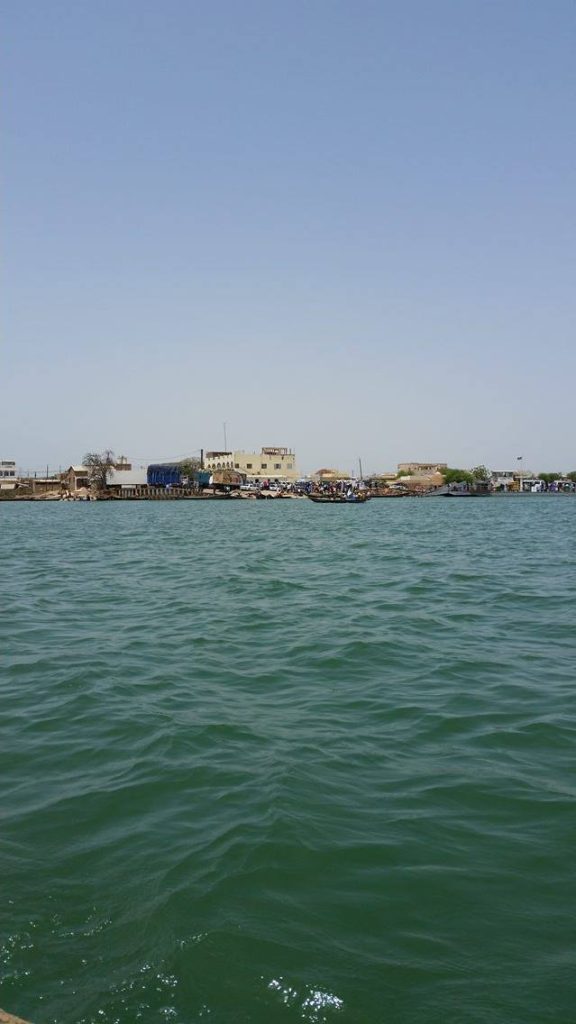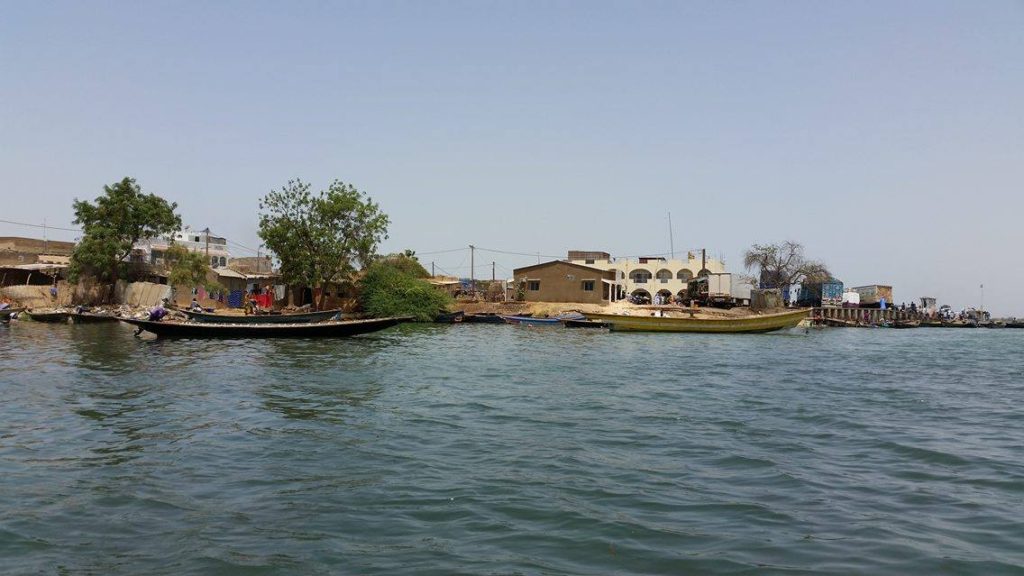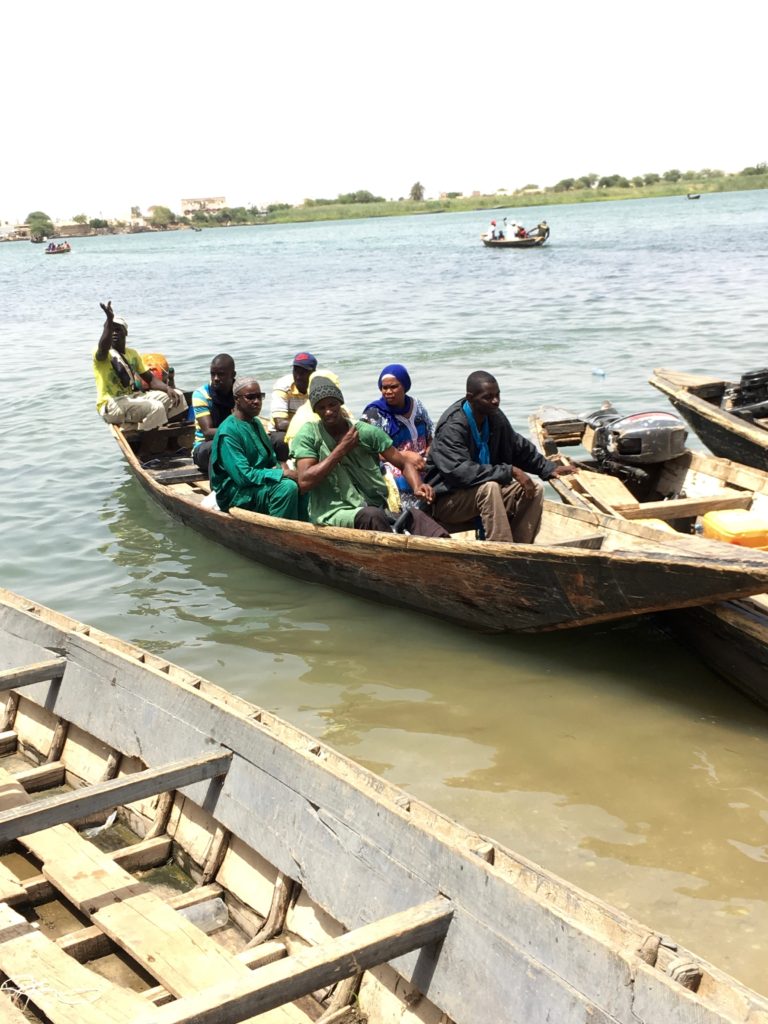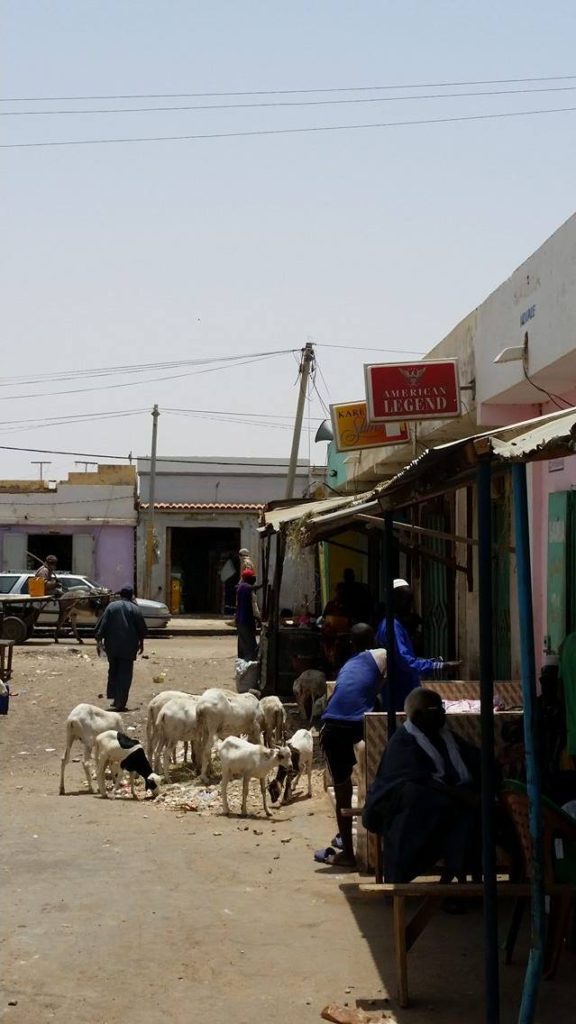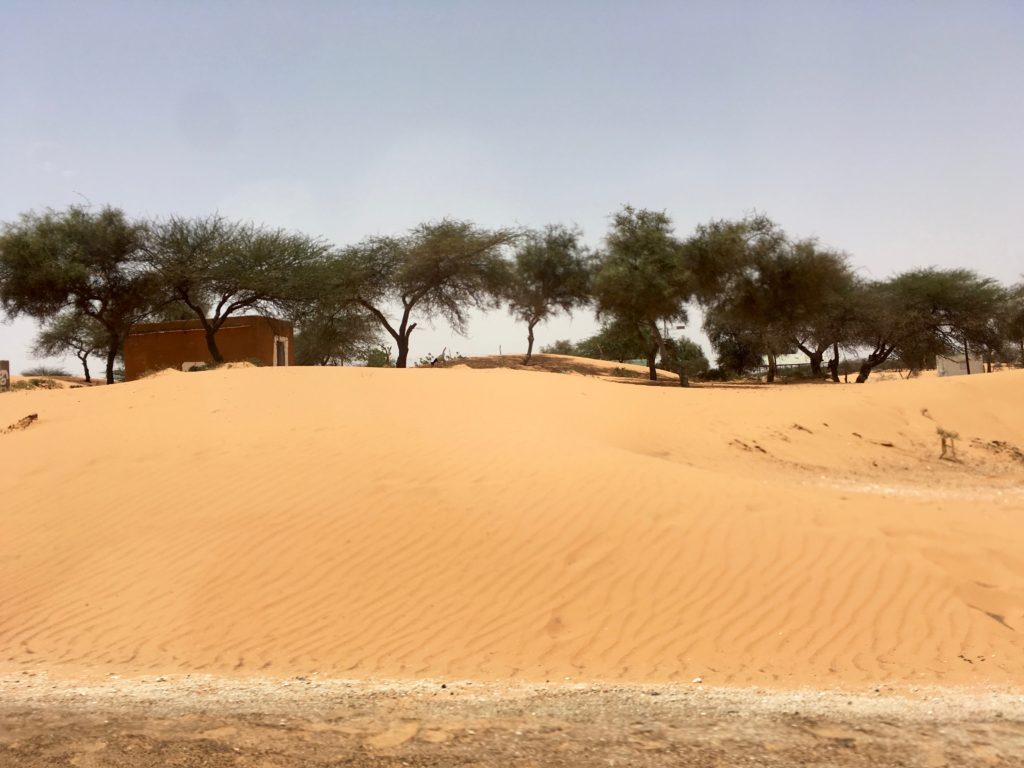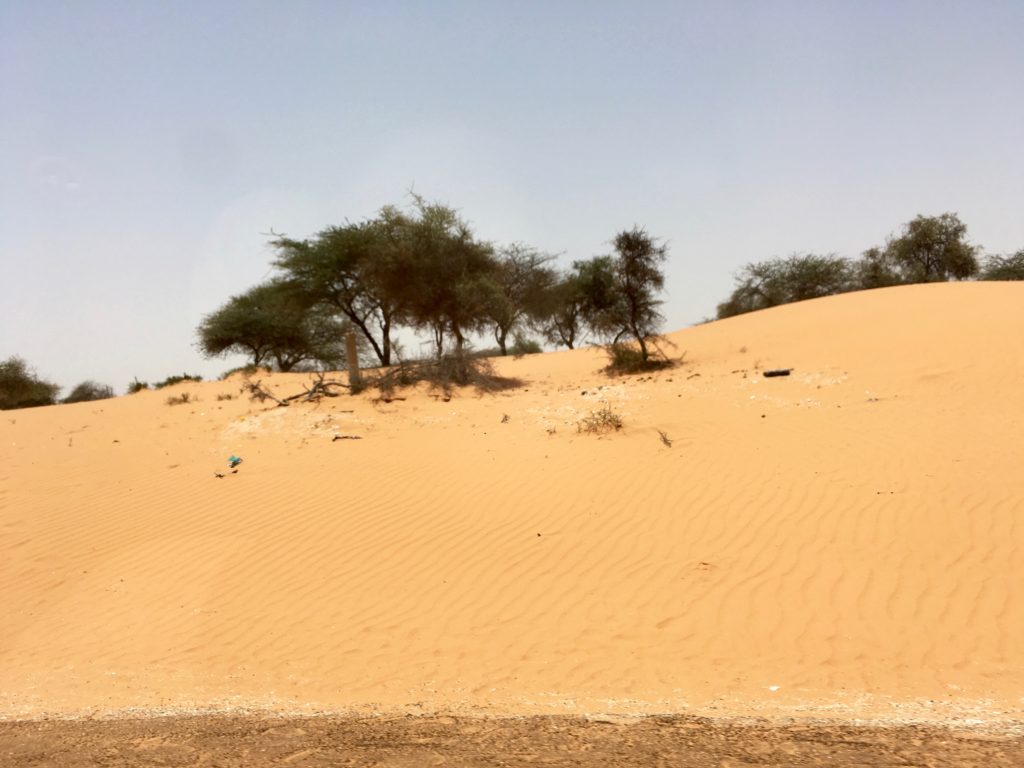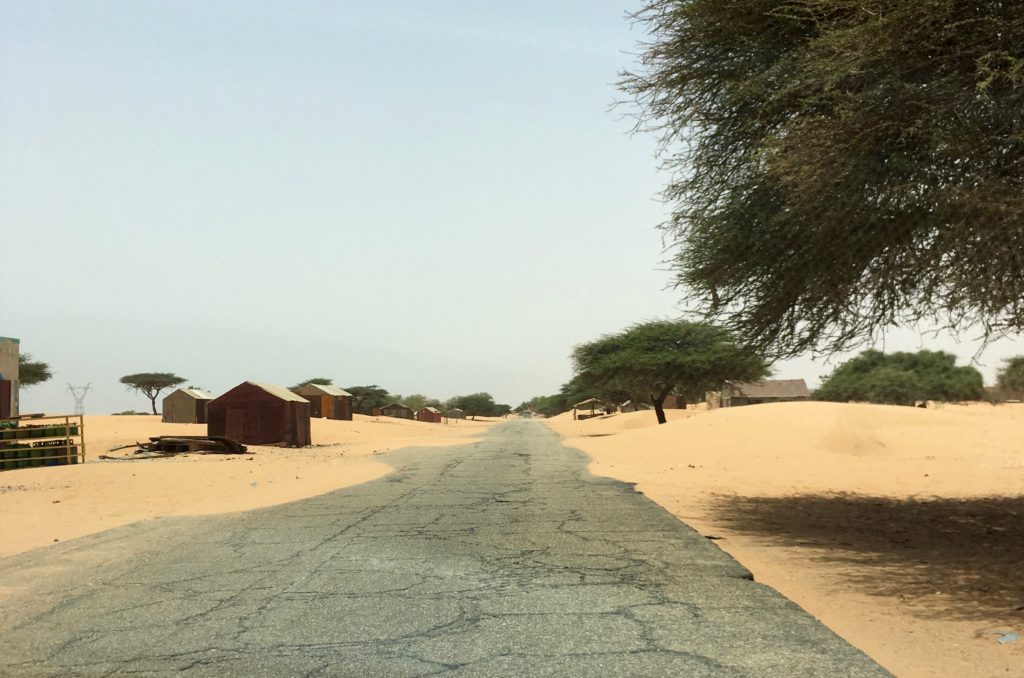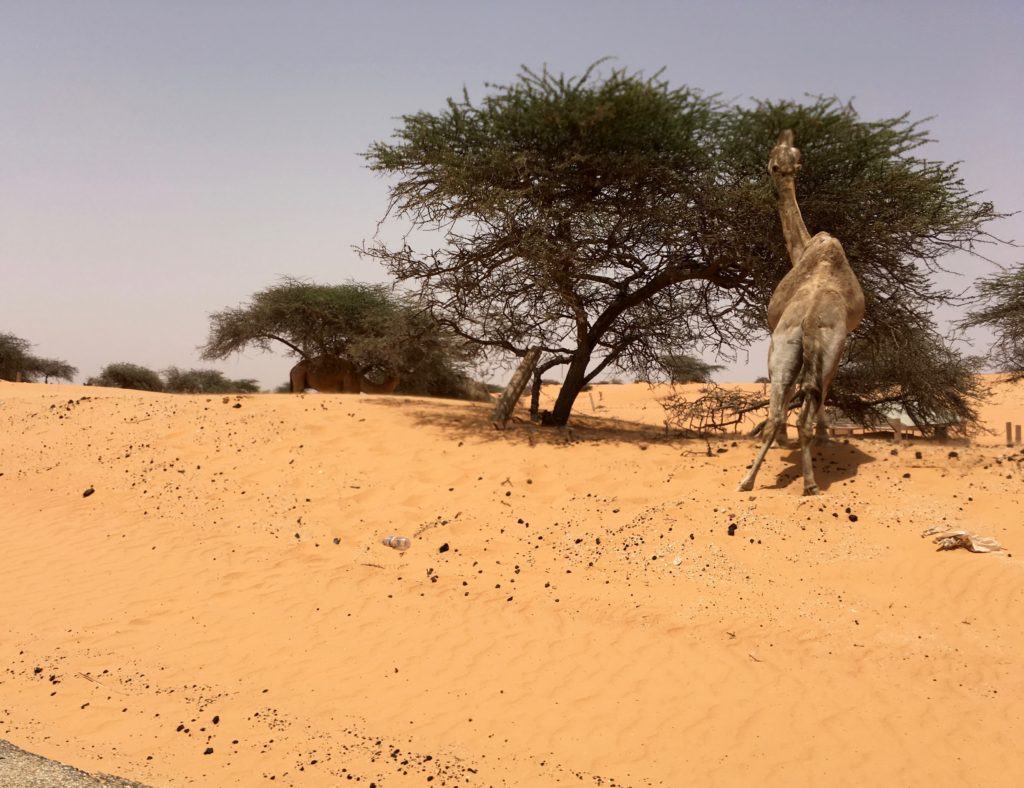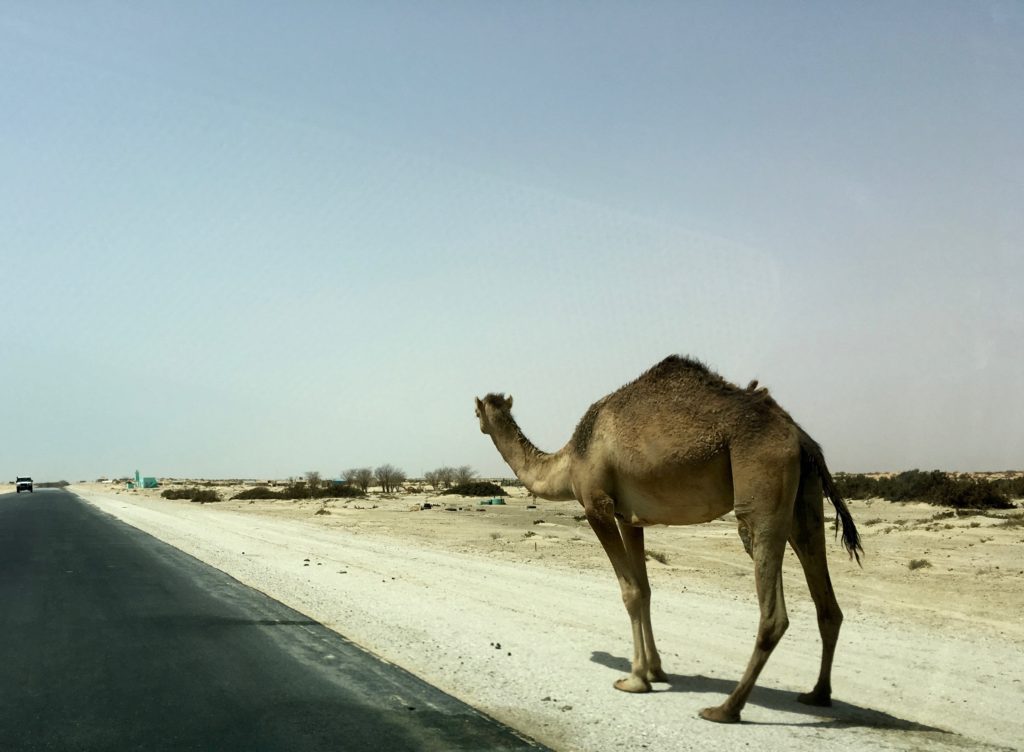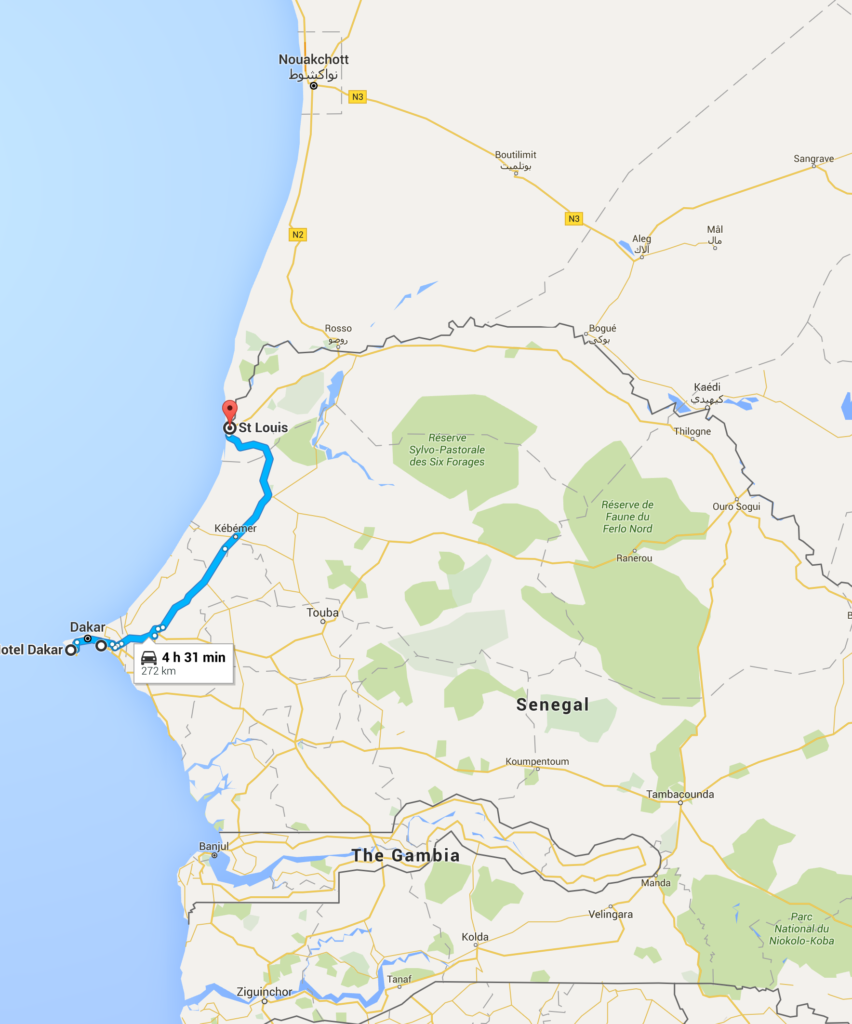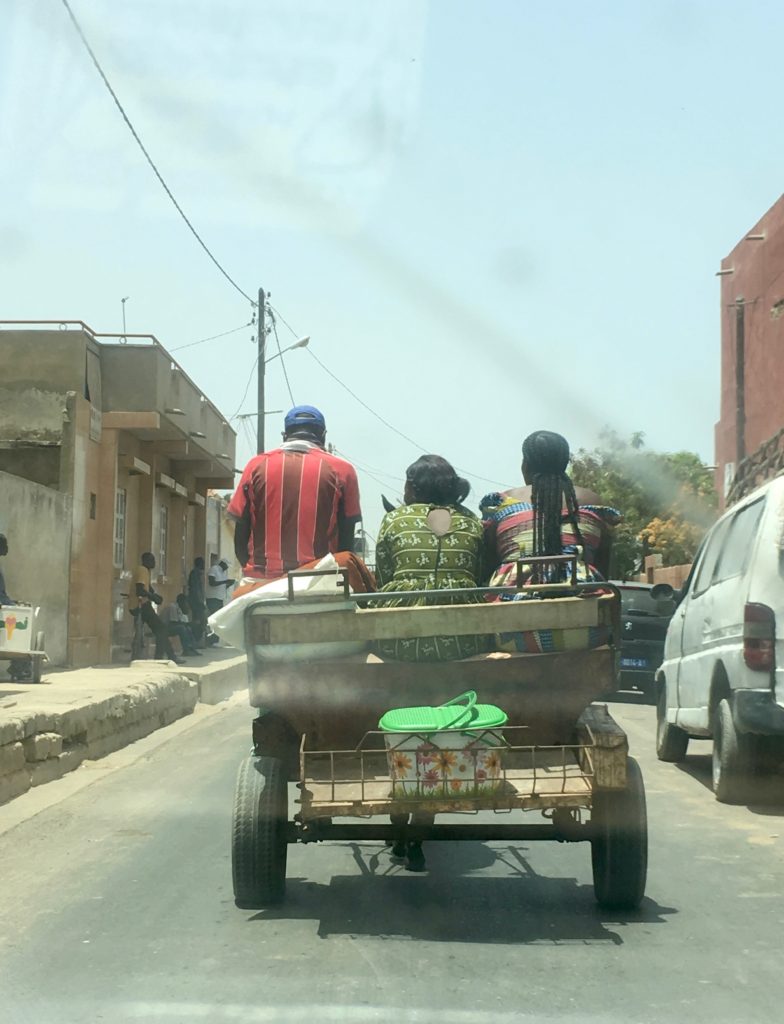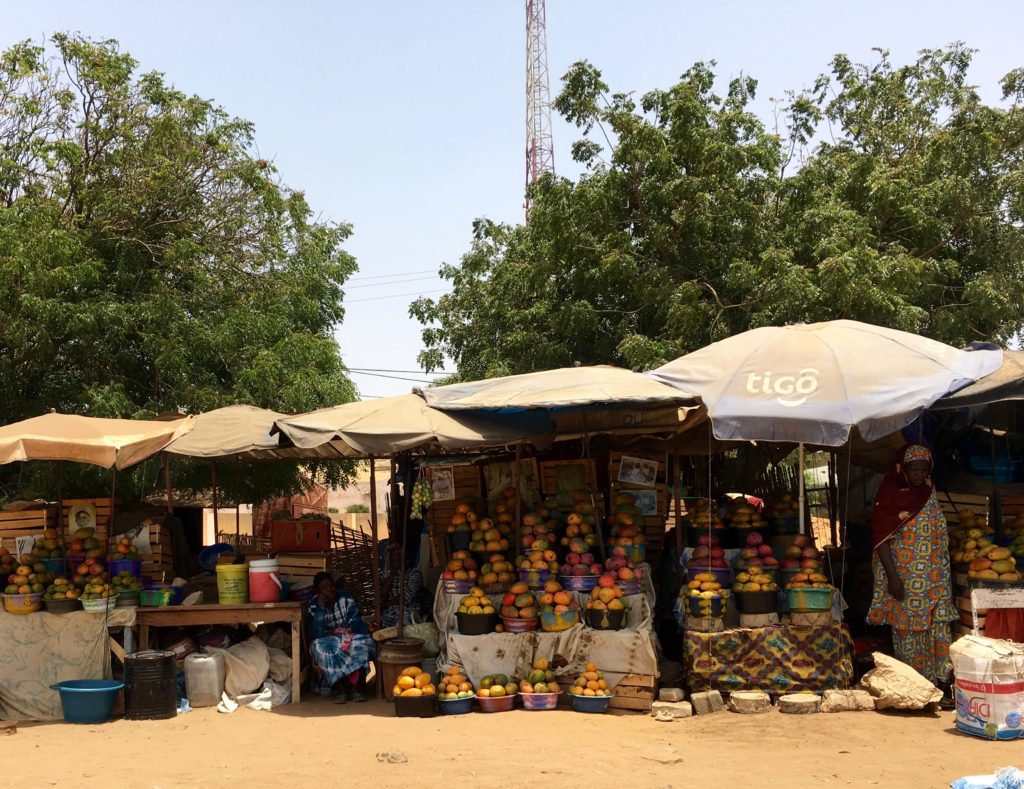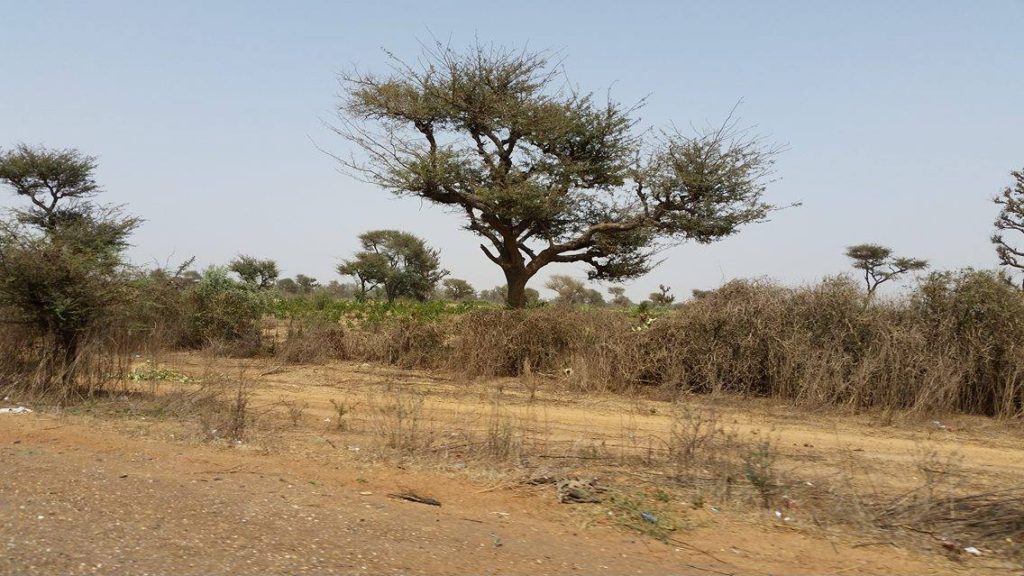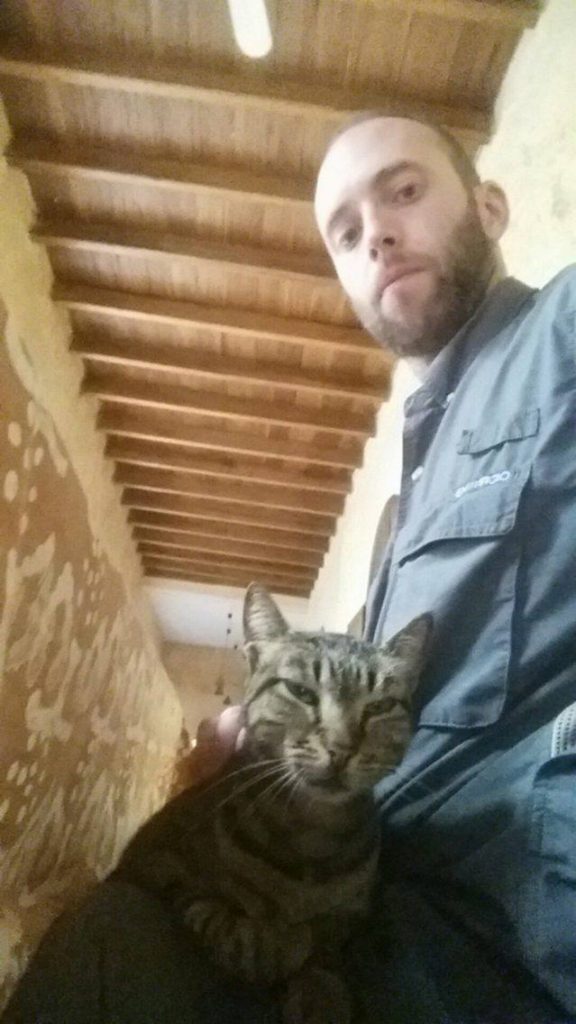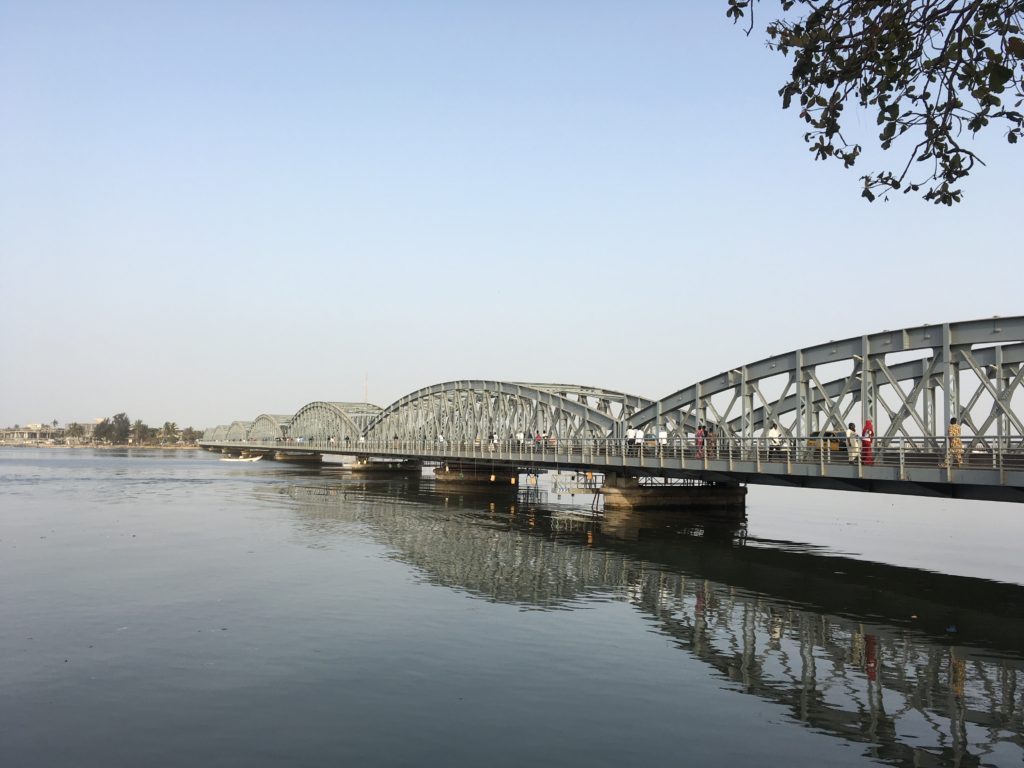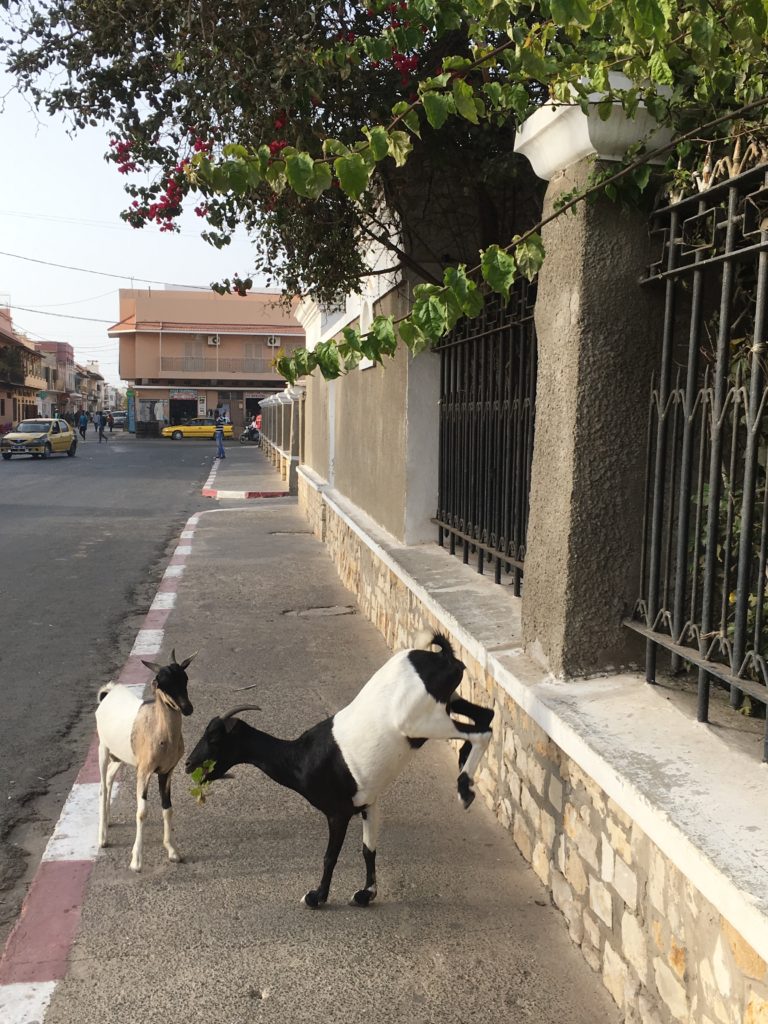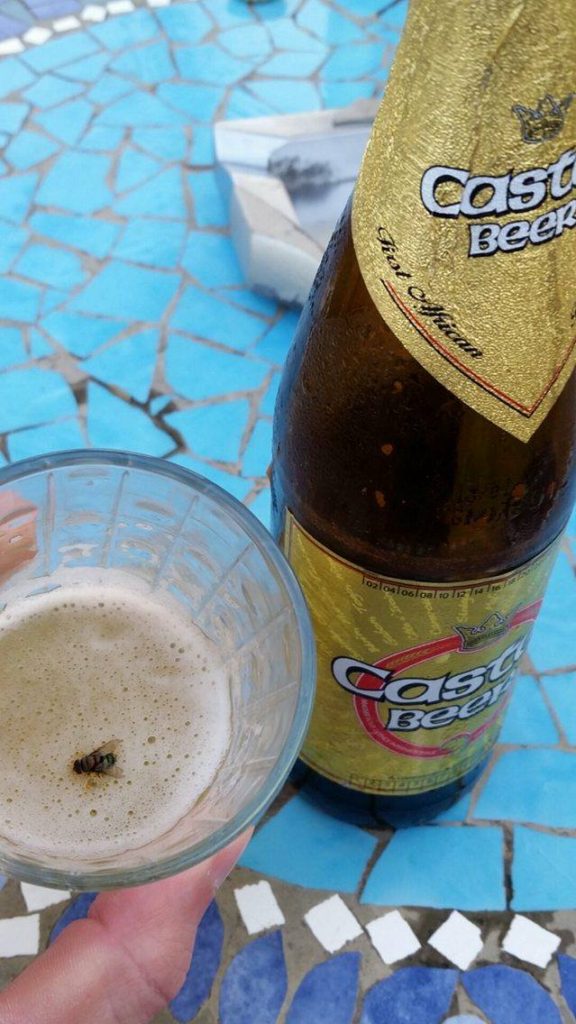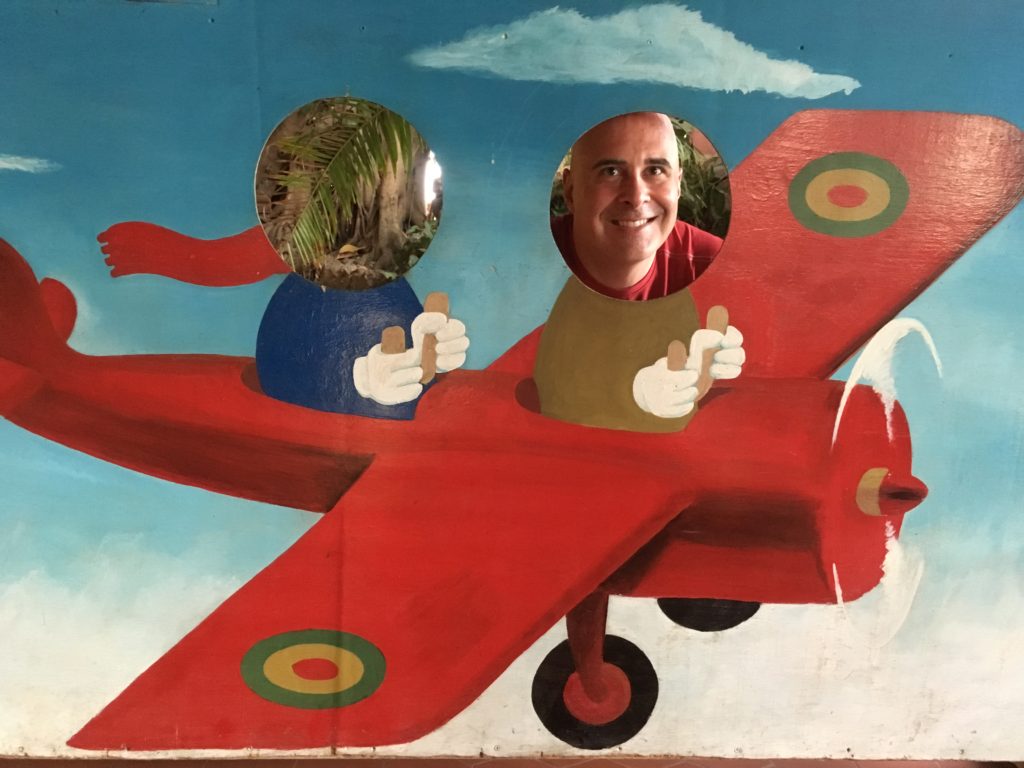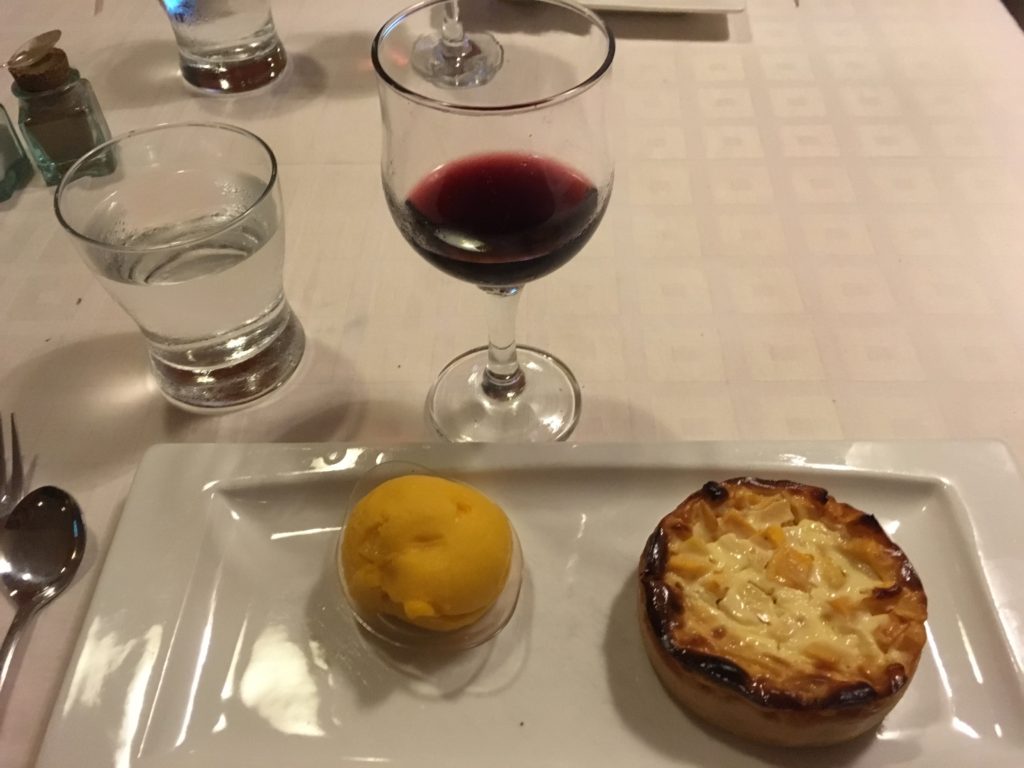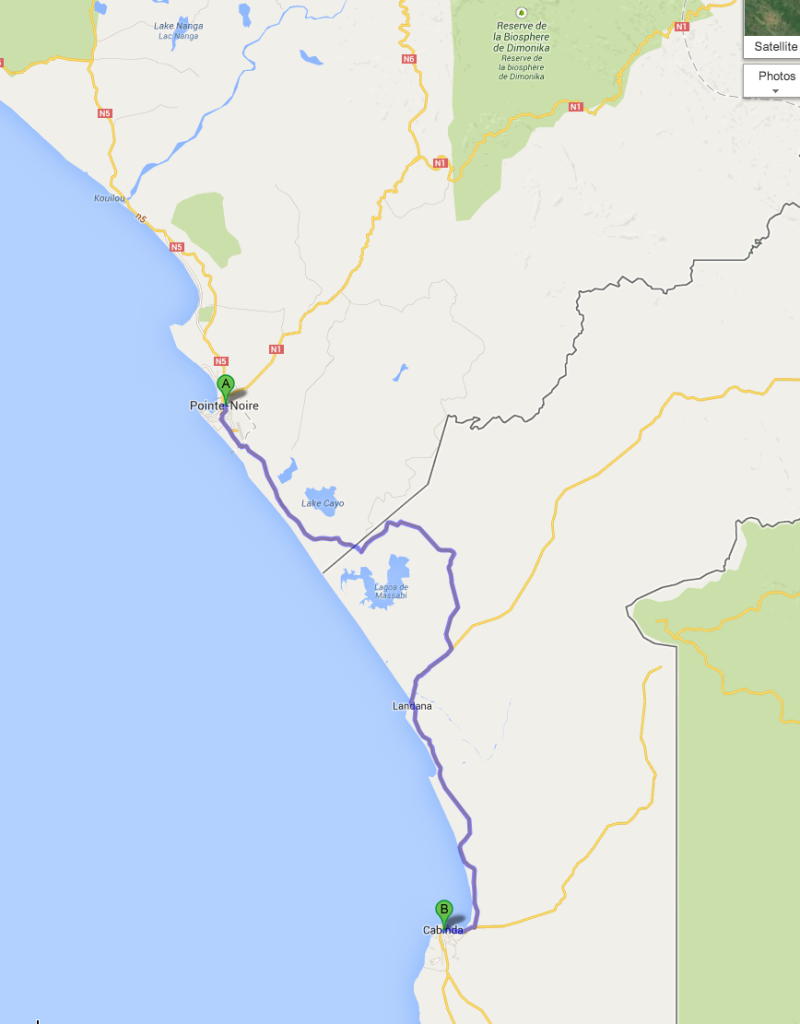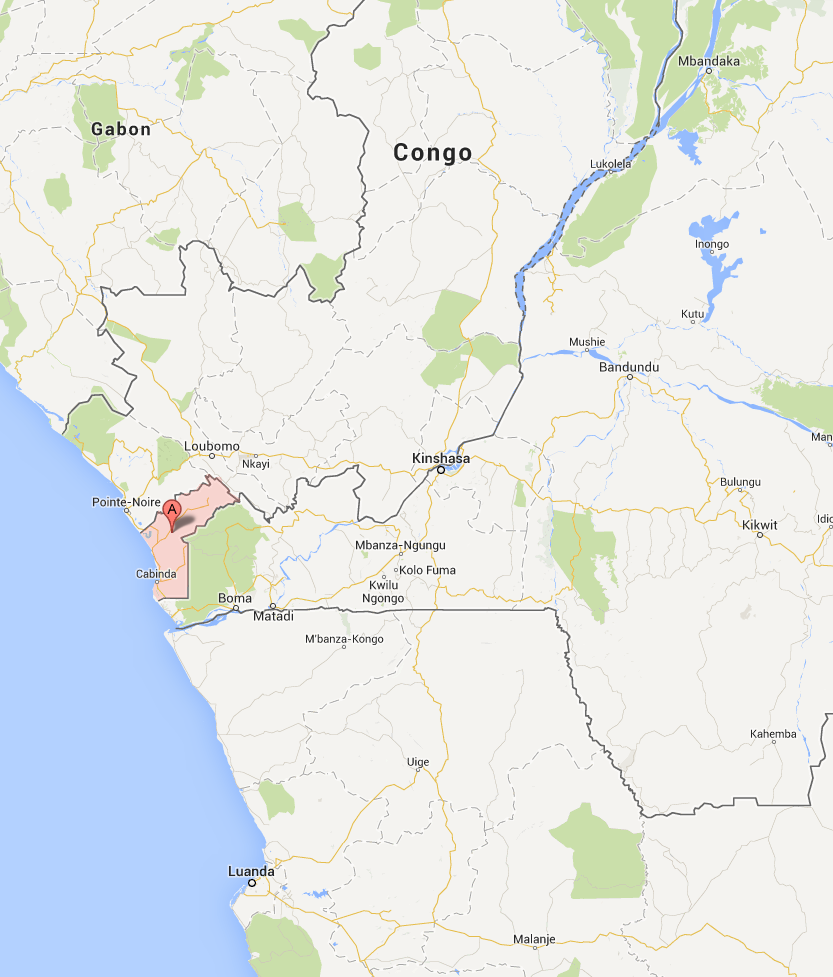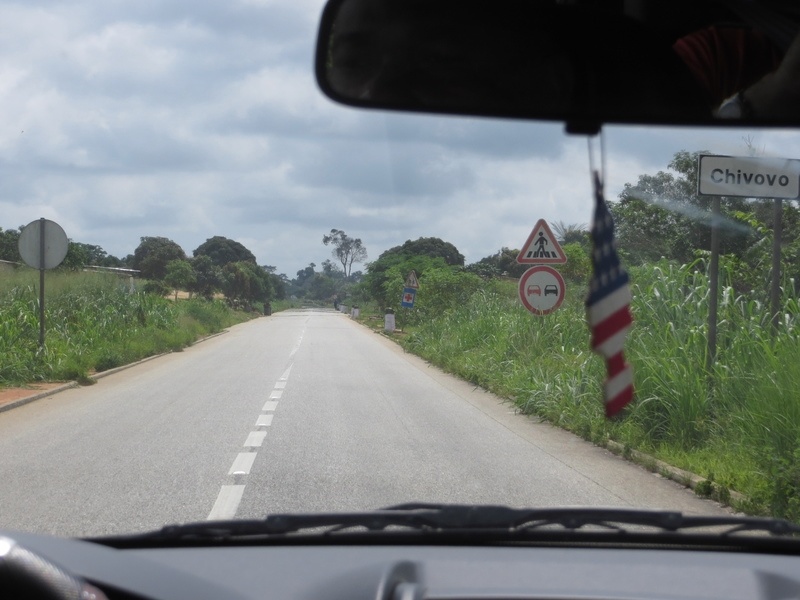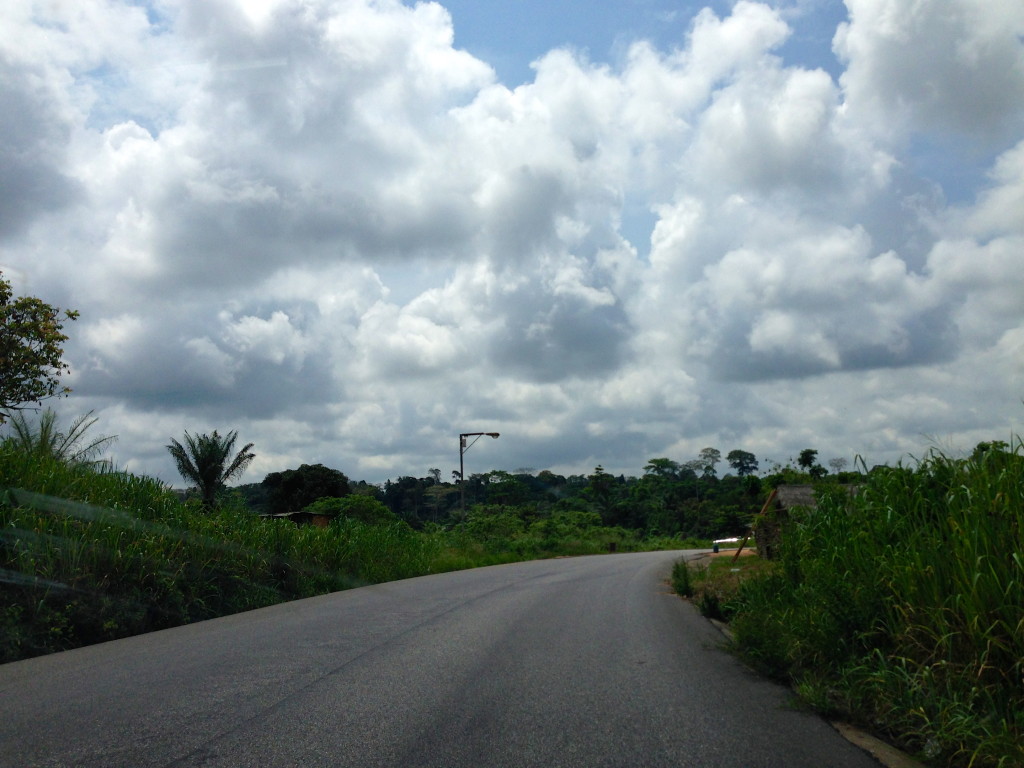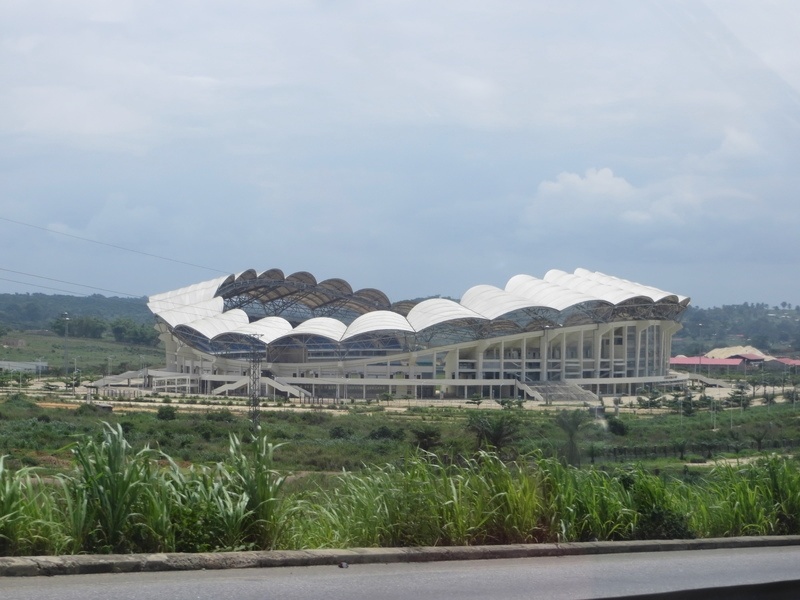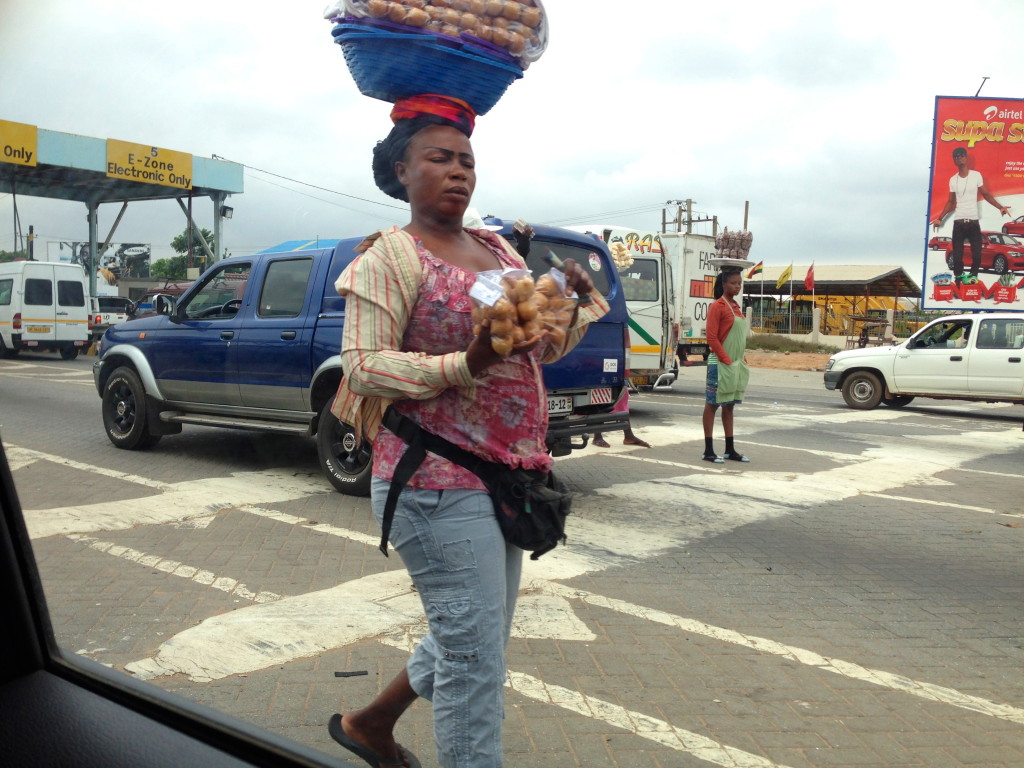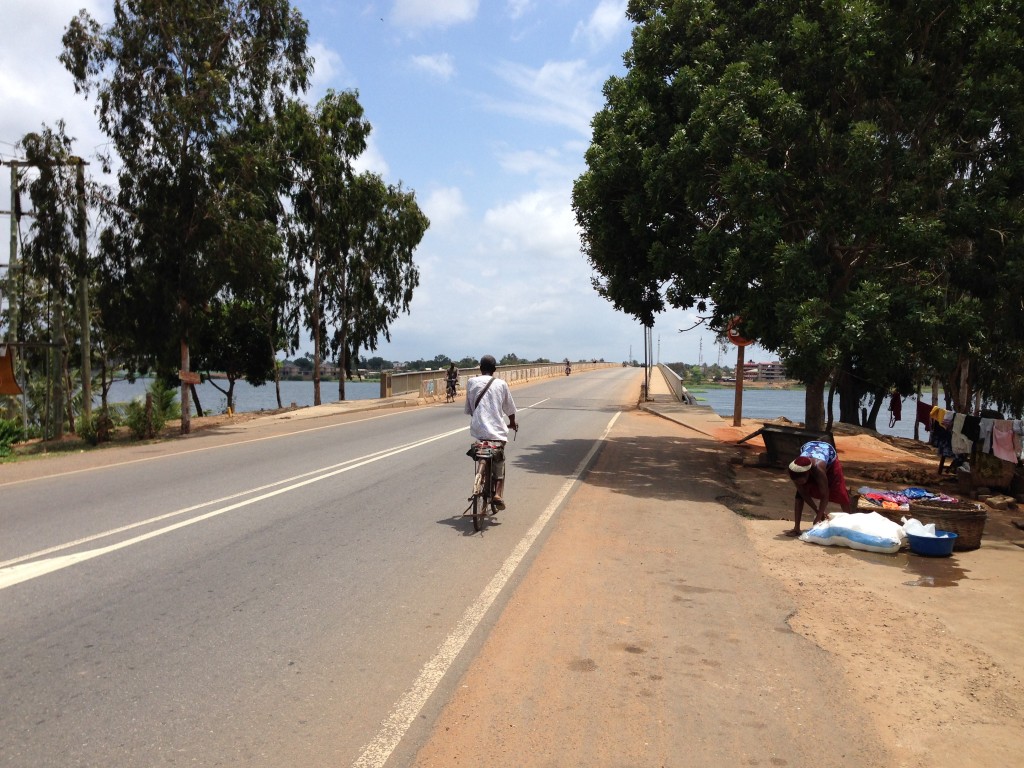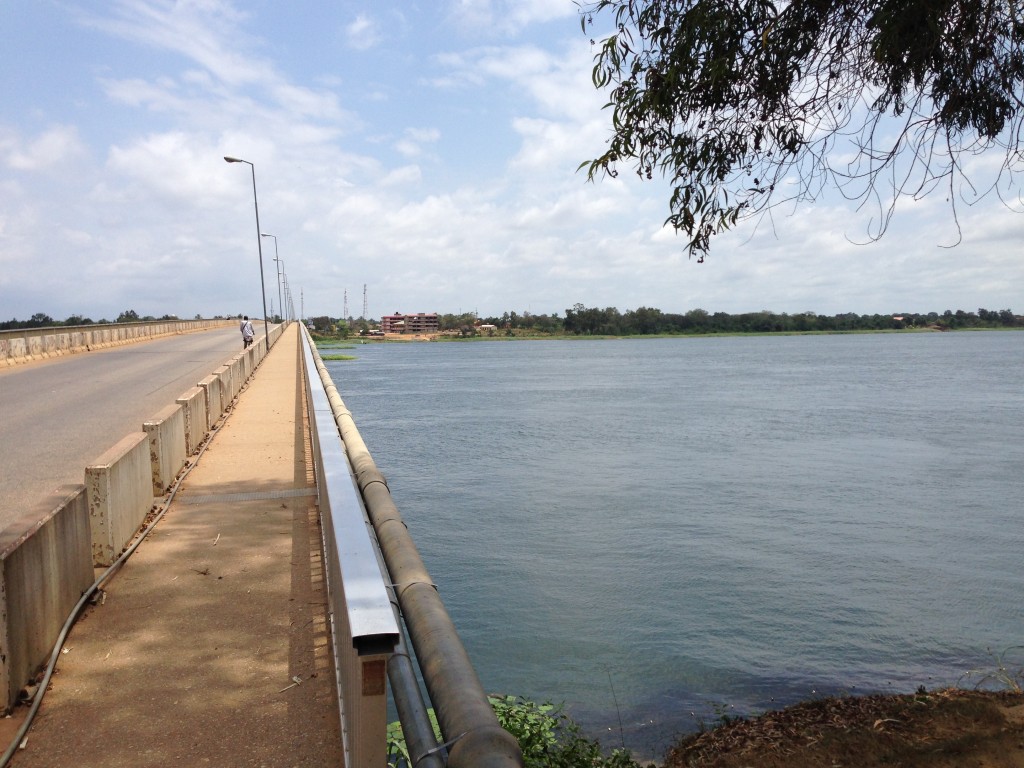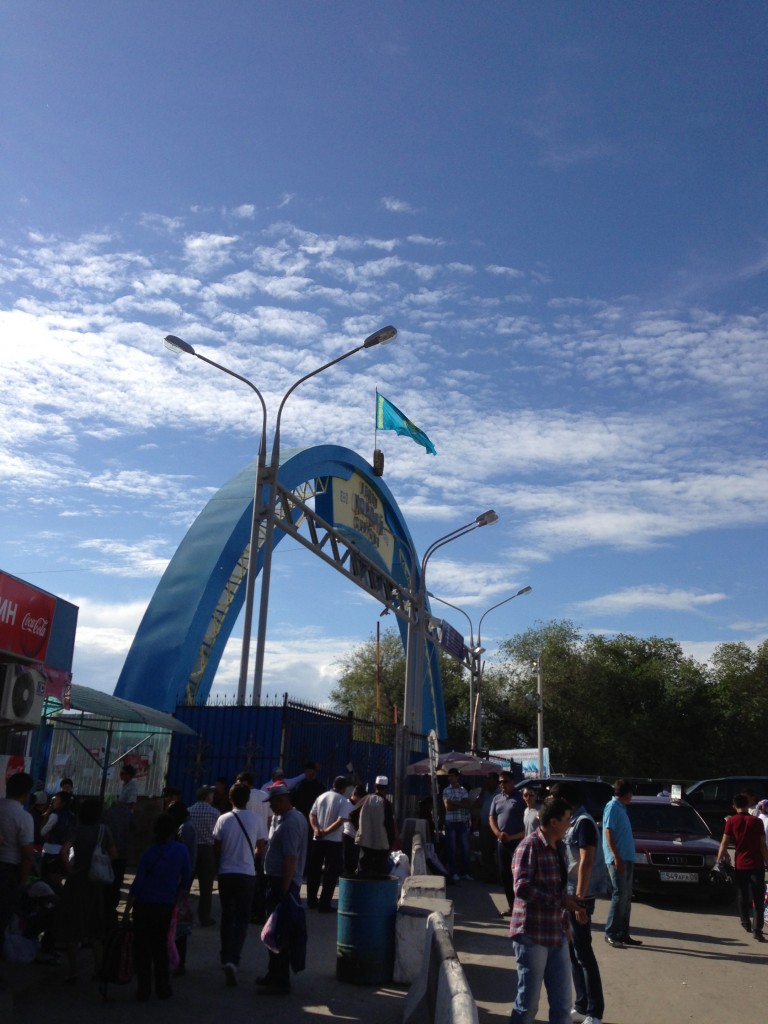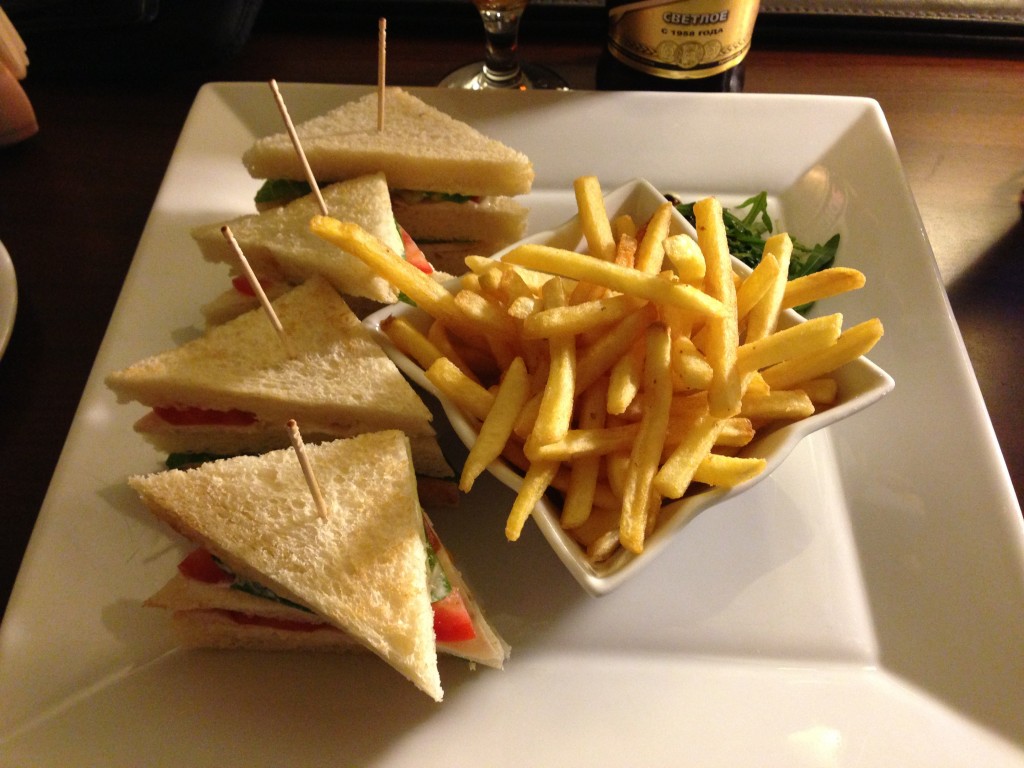Woke up early to get on the road, and Yves and team already had breakfast ready in the courtyard. Baguettes, pastries, sliced mango, bisap juice and fried eggs. I’m normally not a huge fan of staying in smaller places because of the “forced community” aspect, but Jamm was a fantastic hotel. It was nice staying somewhere more local with hosts who knew the area and made you feel at home. I’d highly recommend it to anyone visiting St Louis!
Small problem when we checked out in that they didn’t take credit cards, but that was easily solved by walking down the street to the ATM and withdrawing some more CFA francs. Bill settled, and still no sign of either of the drivers who had offered to take us to the border. It was pretty clear that they wouldn’t be showing up, but no worries, Yves’ staff had the number of a local driver who was more than happy to take us to the border. He arrived maybe 10 minutes later, agreed to the same rate of 25,000 CFA to the border, and we were off. This car was much more comfortable than the ones the previous day, and the 60 or so minutes to the border flew by.
As we rolled into Rosso, the border town, the vibe of the place definitely changed. Rosso is a border town, on both the Senegal and Mauritania sides of the border which is defined by the maybe 100-200 metre wide Senegal River. It’s also known as Africa’s most difficult and corrupt border, and several people have posted it’s taken 3-4 hours to cross. We were fully prepared for the worst. As soon as we pulled into town, the taxi was swarmed with “helpers” offering to help us with things. Fortunately, I’d contacted my local office and they had helped me hire someone to meet us at the border. Problem was…he was late.
Eventually the Senegalese police became annoyed at us, and demanded we give them our passports…and they wouldn’t take no for an answer. Fortunately, the fixer showed up about five minutes later and we got the bags out of the taxi and headed into the Senegalese police/border post to complete formalities. Same procedure that I encountered back in January when crossing from Gambia into Senegal and then from Senegal into Guinea-Bissau. Write your name in the book, profession, etc, and stamp stamp stamp, you’re out of Senegal. Super easy.
There’s supposedly a ferry that occasionally runs across the river, but the timing wasn’t right, so the fixer took us down some side streets to a more remote landing where dozens of pirogue canoes were parked. He helped lift the bags up, and we were off:
In the pirogue, with Mauritania a short distance behind me:
Looking back towards Senegal:
After maybe a five minute ride we “docked” on the Mauritania side of the river, and I snapped a quick shot of another pirogue about to head to Senegal. The guy with his arm raised in back was screaming “no photos!”
We were on the beach now, so this officially made country #194 visited – only two to go!
This is where I expected things to get very interesting. Fortunately, our fixer knew the procedure. He found the chief immigration guy standing by the water, and we all walked back into an office together to “talk.” Fortunately, it was pretty straightforward. American passports are not eligible for visa on arrival in Mauritania, but I had a letter from my local office, signed by some members of officialdom, ordering them to make an exception and grant me a visa on arrival. Fortunately, they had no problem at all with this, and I had my visa in maybe 15 minutes – absolutely no problem at all. Plus, it was all digital stored in a computer and then the visa sticker was printed out. I was pretty impressed by how official everything was for a supposedly super corrupt land border.
Ian was up next. Unfortunately, the visa price had gone up since last we heard, and I believe it was something like 120 euros now. Unfortunately he didn’t have enough, so our fixer was like “don’t worry – I’ll take care of it” and produced enough euros to pay the border guy. No problem at all, and I sensed the less time we spent in the border office the better – since that was more time that could be spent attempting to extract bribes.
Once we both had visa stickers we head to head out of the office, around to the other side of the building where there was a window, and hand over the passports (now including visas) for stamping. No problem at all, and just like that…we were out of immigration. Or so we thought. There was still a very large gate to the immigration “compound” and some shady looking police types hanging about demanding we open our bags for inspection.
I made a little bit of a scene with them, showed them the visa and reminded them that if I was able to get a visa on arrival I know “very important people” in Nouakchott so trying to shake us down wasn’t in their best interest. They relented, and agreed to let us go after recording our details in their logbook.
Out of the gate, down another couple of alleys and sidestreets, and into this very shady looking courtyard:
Here we were “invited” into a shop, to “do some business.” First order of business, I had leftover CFA francs to get rid of, and no problem, they exchanged those at a very safe rate. Then, came the shakedown. Ian only had Dollars, and they had fronted him like 120 euros to pay his visa. They were willing to sell him euros for dollars, but at a terrible exchange rate that took like 15-20%. Fortunately he scrounged up like 60 euros so only got fleeced for about $15-20 in bad exchange, but still not great. Then, we were given the “bill” for crossing. Pirogue charges, border tax (which is legit), money to “make things easier” and finally “a small tip for me.” All in, they asked for 7,000 in local currency which was only like $20, so a very small charge for getting through the whole border in under an hour.
Bill settled, the fixer walked us over to the driver he had arranged for us, and we were off!
We were just a couple of miles out of town, when we hit the first police roadblock. I’d read there were several of these on the road to Nouakchott, and the easiest thing to do was have pre-printed “fiche” where are a copy of your passport and all your details – name, where you are coming from, going to, etc. That way, you can just hand them over and not have to wait for the police to copy all the details from your passport. We handed them over, and he waved us on – super quick.
As soon as we crossed the river, the landscape changed – we were clearly in the desert now:
The first 15-20 miles of road were pretty good, but after that it was much poorer the rest of the way to Nouakchott, with the desert overtaking the road in many places:
Wild camels roaming free:
Not too much else to say about the drive. Took maybe three hours max from the border to Nouakchott, and probably about 10 stops by the police to hand over the fiches – all in all pretty easy. When we got to the city we had the driver take us to an ATM to get local currency to pay him, and piece of cake. Definitely having everything pre-arranged made things go much smoother and it wasn’t at all as bad as I read from people online.
I understand that having a fixer for this border crossing is pretty essential if you want to get through in any reasonable amount of time and hiring one on the spot probably isn’t the best option since they have the upper hand then. Thanked our driver for his help, and he gave us his business card to give to anyone else who might want help making the trip. With that, it was late afternoon and time to explore Nouakchott!


